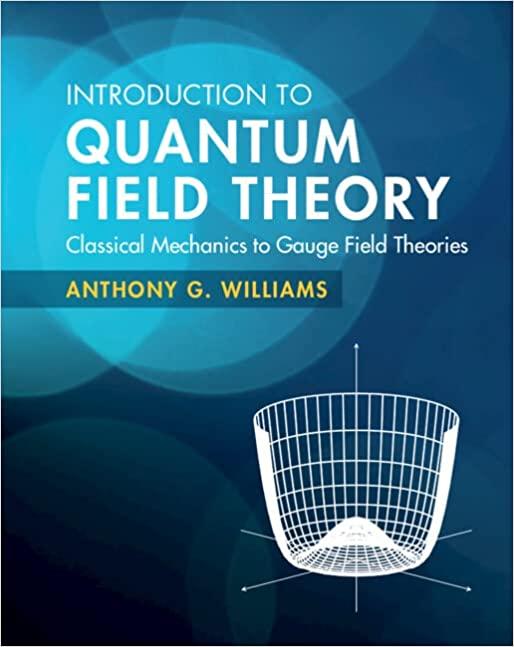A scalar particle with mass (m) and charge (q) interacts with a time-independent electromagnetic potential given by
Question:
A scalar particle with mass \(m\) and charge \(q\) interacts with a time-independent electromagnetic potential given by \(q A^{0}=0\) for \(z<0\) and \(q A^{0}=V\) with \(V>0\) for \(z \geq 0\). A particle plane wave is moving in the \(+z\)-direction with energy \(E>0\). Calculate the reflection \((R)\) and transmission \((T)\) coefficients, where these are the probability of reflection and transmission, respectively, \(R+T=1\). Define \(p \equiv \sqrt{E^{2}-m^{2}}\) and \(K \equiv \sqrt{(E-V)^{2}-m^{2}}>0\).
(a) Show that if \(|E-V| (b) Show that if \(E-V>m\), then \(R=\left|(p-K)^{2} /(p+K)^{2}\right|<1\) and \(T=1-R\) and there is partial transmission and partial reflection. (c) Show that if \(E-V<-m\), then \(R=\left|(p+K)^{2} /(p-K)^{2}\right|>1\) and \(T=1-R\), which corresponds to a negative current being transmitted and more positive current reflected than was incident. This is the Klein paradox for the Klein-Gordon equation and shows that \(|V|>2 m\) can lead to particle-antiparticle pair creation. This illustrates the breakdown of relativistic quantum mechanics in the presence of strong fields. (Hint: Use continuity of the wavefunction and its first derivative.)
Step by Step Answer:

Introduction To Quantum Field Theory Classical Mechanics To Gauge Field Theories
ISBN: 9781108470902
1st Edition
Authors: Anthony G. Williams





